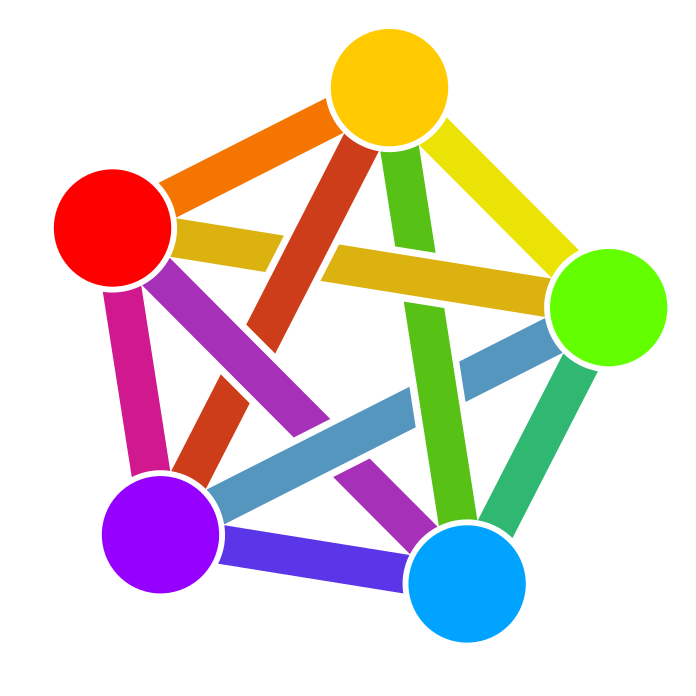95ish IIRC
- 3 Posts
- 30 Comments
Lately mostly a very basic five-pour with Orea

 3·1 year ago
3·1 year agoI’m also not interested in hand cranking so the grinder must have a timer/automatic setting
Most new “enthusiast”/community fave grinders are single dosing, mean you weigh the beans out and grind them until they’re ground. Does that work for you or do you need a hopper-based timer setup?
Another factor to consider is whether you have a strong existing preference between conical and flat burrs, or for burrs that produce a particular style of coffee. (e.g., do you value “high clarity” or are you more concerned with body/texture)

 6·1 year ago
6·1 year agoThe question is, if there are instances that are full of transphobic content, and they’re reported, does firefish defederate them. If they do, the view will improve. Although, global feeds are never very useful.

 2·1 year ago
2·1 year agoI feel like finding a good instance in the fediverse (that’s accepting users) is always a nightmare.
That being said, I’ve been happy with the vibes on lemmy.blahaj.zone and they have a calckey/firefish instance (that’s the main blahaj.zone). But it’s not strictly general-purpose.

 12·1 year ago
12·1 year agohttps://mas.else.social/@choyer/110746384528095273
Someone checked and there’s already an existing trademark for Firefish in software specifically, at least in Europe. Apparently they make HR solutions of some sort.
https://jobs.firefishsoftware.com/about-us/meet-the-team.aspx

 17·1 year ago
17·1 year agoFirefox, but make it wet
(I don’t know if it’s a worse than “calckey” tbf)

 1·1 year ago
1·1 year agoA thing that’s interesting to me is that a lot of folks have a strong aversion to the oils and sweetener in creamer that they seemingly don’t have to plant-based milks, which generally (especially in their “barista” versions) rely on both those things to get the correct flavor, texture, and foamability. Or at least, I see those objections deployed against creamer constantly and against plant-based barista milks pretty infrequently.
Ditto for flavored syrups in espresso-based milk drinks which add tons of sugar (obviously) as well as flavors that are no more inherent to the coffee than “irish creme” flavored creamer. (See also: stuff like cereal milk lattes, which are just, like, a more artisanal way of obtaining basically the same types of artificial flavor.)
This isn’t to say that creamer is healthy or good, just that it feels like some people are selectively applying a health judgment to products that are coded as lower class which they do not (or, not as commonly and loudly) to similarly unhealthy products that are coded as higher class.
(FWIW: I generally drink filter coffee black, but often use oat milk in small espresso drinks.)

 2·1 year ago
2·1 year agoUnless you’re doing science or law (and even then often), if people know what you mean when you refer to something, then you’ve used the “name” correctly. It is so common to add milk or sugar to coffee that there is minimal connotation of “black coffee” in the word “coffee” as people use it, at least in US English. For this reason, specifying “black coffee” is much more necessary than “straight vodka” in actual speech.
It’s very funny to want people to invent a whole new word that is the equivalent of white russian for putting milk in coffee. There’s no benefit to it. If you want to be pretentious about preferring to drink your coffee a certain way, you can do that anytime. Or maybe you can give it a special name. From now on drinking coffee black is called Asshole Coffee. Put it in the dictionary.
It’s a bit different with espresso drinks because those do have specific names that are in common usage and ostensibly those names refer to something like a recipe.[1] If you order a cortado and they hand you a large latte, it would be reasonable to be annoyed. If you order a cortado and they ask you how many ounces of milk you want in it, it would be reasonable to be confused. If you order a cortado and then go add a bunch of milk to it, it would be reasonable for them to be confused.
But nobody’s confused if you ask for a coffee and someone asks if you want milk in it (or room for milk), and nobody’s confused if you get coffee and add milk to it. Or if you don’t. Because we all have a shared usage of the word coffee which does not stipulate additives.
BTW where things can get weird is when there are significant regional differences in certain terms. There was a fun thread on reddit a while back about a US barista who took an order form a British customer who asked for a latte made with “cream” and was shocked when the barista used heavy cream to make it. (After the barista had asked what they thought were sufficient clarifying questions to confirm that the customer didn’t just want whole milk or something else more normal.) The ensuing discussion turned up hugely different expectations from different parts of the anglophone world as to what “cream” means or can possibly mean, including a surprising degree of variation within users from the UK.
Although there is so much variation from shop to shop that the definitional boundaries between espresso drinks can get very fuzzy. ↩︎
Tech also involves corporate $$, “disruptive” (read: anti-worker) innovation, etc. the general skew of tech as an industry seems center-right to me plus lots of tech bros fully engaged (sometimes “ironically”) with the alt right.
At the local level, tech bros form natural partnerships with right wing interests around gentrification and policing.

 1·1 year ago
1·1 year agoFrom an opsec standpoint, certainly. Or they’ll kick in your door like the Kolektiva admin. Definitely best to use end to end encryption if you have any need to protect yourself from state actors. But also fuck meta
If you enjoy learning via youtube, I would say, check out James Hoffmann’s channel for info on different kinds of brewing methods and how to get the best out of them. Hoffmann is a really good resource because he does a great job of breaking things down in detail in a way that’s comprehensive but also digestible. (And funny.) Lance Hedrick’s channel is also really good and informative, but a bit more nerdy and chaotic.
When looking at different brewing devices, the main category split is between immersion and percolation. Immersion means that the coffee is sitting in the water and steeping like tea. Percolation means that water is flowing through the coffee. Percolation is more efficient at extracting solubles from the coffee, which creates different brewing dynamics. One isn’t better than the other, although immersion may be more forgiving.
Immersion or mostly immersion brewers:
- French Press: Pure immersion, no filter. This means that you will have a much thicker body as you’re getting all the oils and some of the fines in your cup
- Aeropress: Mostly immersion, with a paper filter. The brewing part is similar to a French Press, but you’ll get a cleaner cup because the filter is taking out some of the oils and fines. (If you don’t want that, you can also get metal filters to use in the Aeropress.)
- Clever Dripper: Similar to aeropress, but I think probably better for doing large batches?
Percolation brewers:
- A drip coffee machine like a Moccamaster
- Pourover / manual drip, which is a huge category with lots of different kinds of dripper with different materials and shapes. Plastic brewers will have the best thermal retention. (I.e., your brewing water will stay hotter)
- Conical (cone-shaped)
- Hario V60 is the most popular enthusiast pourover dripper. It’s known for emaphsizing acidity (sourness) and clarity of flavors. It’s not the absolute easiest to get right, but there are a ton of detailed recipes you can follow.
- Kono dripper or Hario Mugen. These are similar to the V60 but have lower “bypass” meaning that less water is getting outside the filter and around the coffee. They are a little more forgiving than the V60 but there are fewer easy to find recipes. The Mugen is designed for single-pour recipes that are easy to do, and is intended to be more user friendly than the V60.
- Flat-bottomed brewers are supposed to emphasize less acidity and more sweetness/florals as opposed to conical
- Kalita Wave is probably the second most popular enthusiast dripper. There are several different models, I think the “Tsubame” ones are supposed to have the best flow rate and thermal performance but they’re pricey. Easy to find recipes, but some of the models have a reputation for clogging
- Orea, Timemore B75, Fellow Stagg are more “modern” flat bottom brewers that are designed to have faster flow rates, less clogging, and better thermal performance than the Kalita. They tend to be a little pricey, although the Timemore B75 seems like a good budget option.
- “Zero bypass” brewers like the Tricolate, Next Level, and also heritage brewers like the Vietnamese phin and South Indian filter. These are sort of like a subclass of flat bottom brewers where bypass is impossible. The historical ones are normally used to create very concentrated coffee that is often consumed with sweetener, while the modern ones are meant to optimize efficiency. These often have very long brew times.
- Conical (cone-shaped)
Percolation/Immersion Combo
There are also now brewers that let you select between immersion and percolation, like the Hario Switch, Goat Story Gina, and the upcoming Next Level Pulsar. These let you use either all immersion, all percolation, or interesting combinations of both.
Espresso and not-quite-espresso
There’s also espresso, which is a form of percolation brewing performed under pressure, resulting in a very concentrated beverage. Espresso is kinda complicated and expensive so most folks skip it unless they really love espresso in particular. If you want to get somewhat close to espresso without the expense, most folks go for a Moka Pot.
Freshly ground coffee is better, but if you have pre-ground coffee on hand, there’s no reason not to use it.
Accuracy (and particularly, consistency/reliability) in scales matters, but you don’t need an expensive scale. It just needs to be accurate to a gram (tenth of a gram is better but not necessary) and able to measure up to the weight of your largest batch+brewer+mug/carafe. (1kg should do)
Lots of kitchen scales will work. Coffee-oriented scales also have a timer function which is very handy. Some have more sophisticated functions as well.

 23·1 year ago
23·1 year agoPoor moderation like not moderating hate speech or punishing users for wanting accessibility?

 1·1 year ago
1·1 year agoTwitter got even worse again recently

 1·1 year ago
1·1 year ago::shocked face:: who could have predicted this, lol

 2·1 year ago
2·1 year agoI don’t have any philosophical objection for paying to use a platform I enjoy, but in the case of youtube, they have been so deliberately detrimental to society in terms of platforming fascists that I feel bad about the prospect of paying them, even if much of the money is going to creators I do like who I’m actually watching

Moka is not-quite-espresso. It’s percolation brewing under pressure, but the pressure is much lower than what is now considered to be espresso. (But very similar to the earliest espresso machines from the first part of the 20th century)
It’s metal filtered, so like espresso and French press, you’re getting plenty of oils and fines. The beverage concentration normally falls in between the two. Not as thick as espresso but thicker than most other preparation methods, when comparing normal recipes at least.